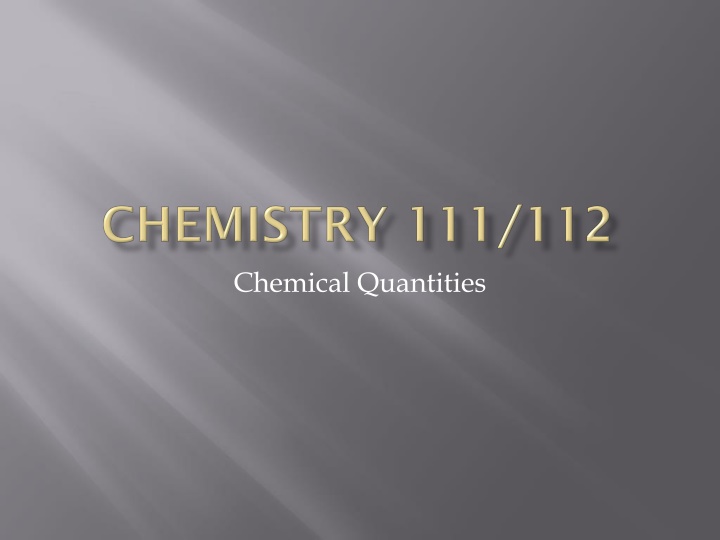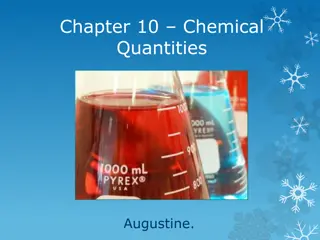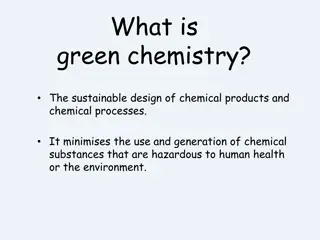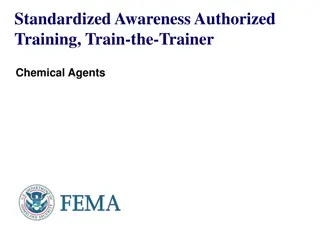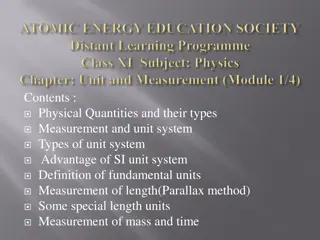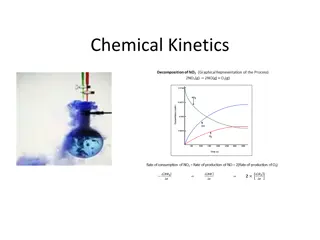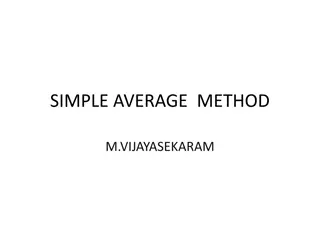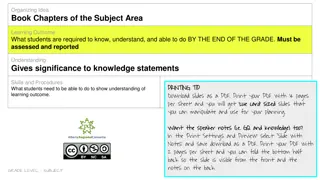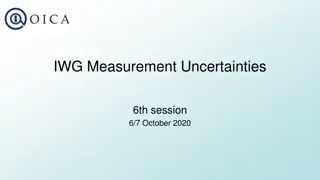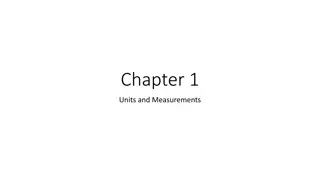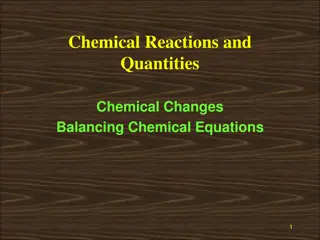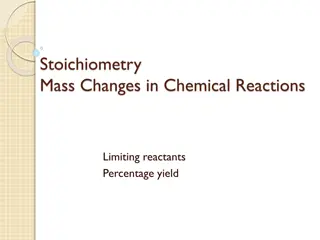Chemical Quantities: The Importance of Measuring and Calculating
Dive into the world of chemical quantities, where the accurate measurement and calculation of substances play a pivotal role in chemistry. Explore the significance of moles, molarity, and stoichiometry in understanding chemical reactions and compositions. Learn how to apply these concepts in practical scenarios and experiments, and enhance your grasp of fundamental chemical principles.
Download Presentation

Please find below an Image/Link to download the presentation.
The content on the website is provided AS IS for your information and personal use only. It may not be sold, licensed, or shared on other websites without obtaining consent from the author.If you encounter any issues during the download, it is possible that the publisher has removed the file from their server.
You are allowed to download the files provided on this website for personal or commercial use, subject to the condition that they are used lawfully. All files are the property of their respective owners.
The content on the website is provided AS IS for your information and personal use only. It may not be sold, licensed, or shared on other websites without obtaining consent from the author.
E N D
Presentation Transcript
Chemistry is a quantitative science There are three typical ways in which we measure the amount of something By count A dozen eggs By mass A kilogram of apples By volume 2L of milk
A number is useless in chemistry unless we have a unit to associate with it When we know the units, we can convert from one representation to another Ex. How many metres are in 5 km? Typically, conversions are set up as a comparison Ex. 1000m/1km, 4.184J/1 calorie
Chemistry uses units that are extremely small/large Ex. The number or mass of atoms, ions and molecules A specific count has been given to these particles to represent a unit of measure Mole 1 mole = 6.02 x 1023representative particles Also called Avogadro s number A representative particle can be atoms, ions, molecules, formula units
https://www.youtube.com/watch?v=TEl4 jeETVmgHow big is a mole? (Not the animal, the other one.) - Daniel Dulek https://What Is Avogadro's Number - The Mole | Chemistry for All | FuseSchool
Use the following conversion to make a unit change from moles to RP and vice versa 6.02 x 1023 representative particles 1 mole You can write the inverse of this conversion if you want to convert representative particles to moles
How many moles of magnesium is 1.25 1023 atoms of magnesium? 1 mol Mg = 6.02 1023 atoms Mg
Assignment/Homework Page 291 #3 & 4 Significant Digits worksheet
Assignment/Homework Page 292 #5 & 6
Chemists need a useful way of measuring the mass of substances A conversion is needed to compare moles to mass Molar mass is a measured amount (in grams) of one mole of pure substance The chemical formula of a pure substance contains the type of element present as well as the relative amount Calculate its mass based on its formula
Ex. SO3 Look up the individual atomic mass of each element on the periodic table S = 32.06g/mol O = 16.00g/mol 2. Multiply by the relative amounts S = 32.06g/mol x 1 = 32.06g/mol O = 16.00g/mol x 3 = 48.00g/mol 3. Add the values together SO3 = 32.06g/mol + 48.00g/mol = 80.06g/mol 1.
MSO3 = (1 x 32.06 g/mol) + (3 x 16.00g/mol) = 80.06 g/mol
Q. 7-15 pg. 296 take home task Worksheet on Molar Mass (complete for tomorrow s class)
Q. 7-15 pg. 296 take home task Worksheet on Molar Mass (complete for tomorrow s class) Worksheet on using Avogadro s Number as a conversion factor pass in by the end of this class
